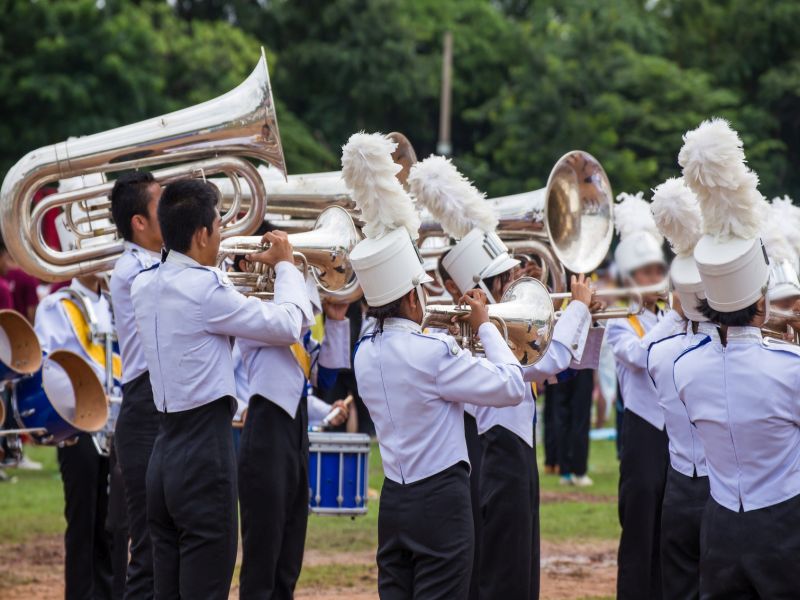
School marching band members are athletic performers who must be physically fit to manage their routines and fancy footwork, experts say.
“These athletes participate in rigorous practices to perfect routines for game day while wearing heavy uniforms in hot, humid conditions,” said Mary Mundrane-Zweiacher, an athletic trainer and certified hand therapist. They have unique needs in terms of preparation and protocols that help minimize risk of overuse injuries and heat-related illness, she said in a news release from the National Athletic Trainers’ Association.
Trainers often work with student athletes, but band members should have access to this type of support when preparing for a new season, according to the trainers’ association.
“Athletic trainers can play a vital role working with secondary school and collegiate marching bands, color guards and others involved in on-field activities,” said Scott Sailor, association president. “They help reduce and treat injury with these performing athletes just like those who participate on school teams. Yet only 37 percent of public high schools have a full-time athletic trainer.”
Parents, band directors and trainers can take steps to help band members stay healthy on the field. The association offers the following tips:
- Get a checkup. All school band members should undergo a pre-season doctor’s exam to ensure they are healthy enough to participate safely.
- Prepare for emergencies. Have a written plan for how to manage injuries or other emergencies, including who is responsible for what tasks at “away” games or practices off school grounds.
- Start early. Weeks before the season starts, students should begin walking outside for about 20 minutes daily. These walks should gradually become longer.
- Focus on core strength. A strong core and good posture is important, particularly for students who play heavy instruments like drums. A trainer can provide an exercise regimen to promote core strength and stability.
- Be mindful of the heat. Band members should begin their routines slowly and build up their endurance. They should seek out shade during breaks and be monitored for signs of heat-related illnesses.
- Dress appropriately. Wearing shorts and T-shirts can prevent overheating during marching band practice. Formal uniforms, which often trap heat, should be worn only during dress rehearsals.
- Drink water. During physical activity, water breaks should be offered to help students stay hydrated.
- Learn the proper techniques. Band directors should make sure students know how to safely hold and manage their instruments to avoid injury.
- Inspect marching fields. Be sure the area where the band is marching is free of debris, water, rocks and other hazards that could lead to twisted ankles, bruised knees or more serious injuries. Band members are looking up when marching and may not notice small obstacles in their path.
- Stock a first-aid kit. Keep this kit on-site for emergencies. It should include supplies for wound management and bee stings. Epi-pens and inhalers should also be accessible for students with allergies or asthma. These items should be kept nearby on the field, not locked in an office indoors.
“Putting the right protocols into place will help ensure a winning season for marching band and color guard members as they thrill, excite and motivate fans across the country this fall,” Sailor said.
More information
The U.S. Centers for Disease Control and Prevention has more on physical activity recommendations for young people.
Source: HealthDay

Leave a Reply